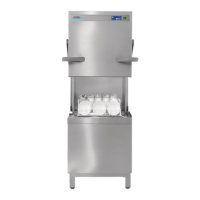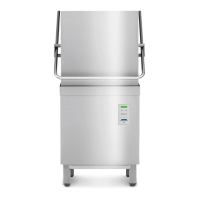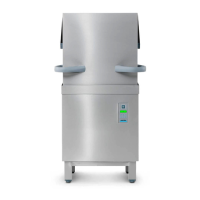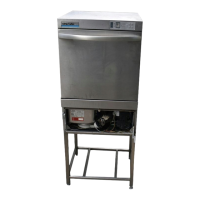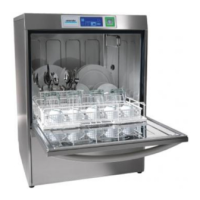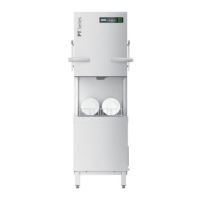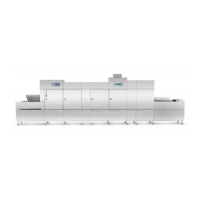
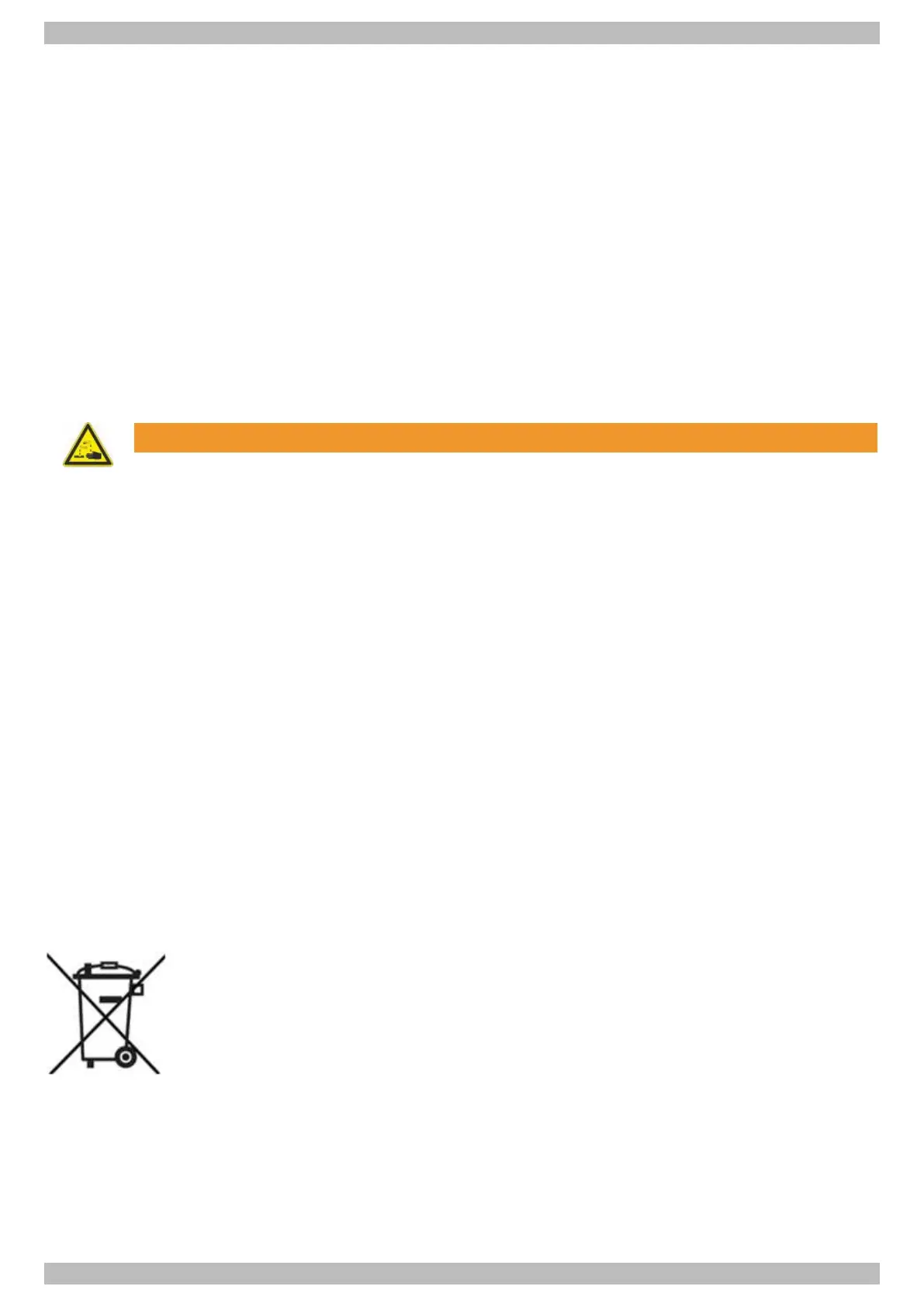 Loading...
Loading...
Do you have a question about the Winterhalter MTR Series and is the answer not in the manual?
| Brand | Winterhalter |
|---|---|
| Model | MTR Series |
| Category | Dishwasher |
| Language | English |
Manual is a component of the warewasher, must be stored accessibly and observed for safe operation.
Instructions protected by copyright; reproduction/distribution requires authorisation; internal use copies permitted.
Warewasher intended for gastronomic use; operate only as described in instructions.
Lists actions constituting improper use; manufacturer not liable for damage.
Explains symbols for instructions, results, lists, notes, and warning notice layout.
Operator must comply with safety rules, train staff, and ensure safe operation and maintenance.
User must adhere to safety regulations, read instructions, and operate machine safely and cleanly.
Details required qualifications and training for connection, installation, operation, and maintenance.
Warns about slipping, sharp edges, moving parts, and need for protective gloves.
Emphasizes connection by specialists, avoiding live components, and protective circuit use.
Warns about hot surfaces causing burns and operating below 0°C.
Advises on chemical handling to prevent burns, eye damage, and poisoning.
Mentions safety devices like door limit switches and stresses they must not be changed.
Details safety regarding flammable refrigerant, ventilation, ignition sources, and room size.
Only authorized technicians and original parts for maintenance/repairs; warranty invalidated otherwise.
Explains MTR as an automatic rack conveyor dishwasher for washing and drying items.
Diagram and list of components for the MTR S model.
Describes the function and components of the pre-wash zone.
Explains how the air knife drying zone removes water with air.
Explains the drying zone's function of drying wash items with warm air.
Details the MTR S 2-tank rack conveyor dishwasher layout.
Explains how to operate the display and start button.
Describes different wash modes like Hygiene, Speed, HighTemp, Container.
Explains how to display temperatures and warewasher data.
Advises on using Winterhalter chemicals for rinse aid and detergent.
Identifies suction tubes for defoamer, detergent, and rinse aid.
Explains the function of the main switch for disconnecting power.
Presents temperature settings, heat pump data, and noise emission.
Outlines menus available to dishwashing staff: Error log, Priming, Videos, etc.
Allows chefs to change settings and access information.
Describes the hygiene logbook and its entries.
Shows operating data like consumption values and operating hours.
Details how to set dosing amounts for detergent, rinse aid, and defoamer.
Describes using the timer for automatic on/off programming.
Explains when and how to descale the warewasher.
Describes how to adjust the display brightness.
Explains how to turn sounds on/off and configure touch feedback.
Details setting the date and time, including seasonal changes.
Explains how to change the display language.
Describes changing units and temperature indicators.
Explains configuring the CONNECTED WASH system link.
Describes setting capacity and resetting the water countdown meter.
Covers site requirements, leveling, and machine feet.
General guidance on connecting the warewasher.
Details connecting the water supply hose and dirt trap.
Lists detailed requirements for inlet water and waste water connections.
Explains electrical connection safety and requirements.
Step-by-step guide for connecting the mains cable.
Explains how to establish equipotential bonding.
Details connecting dosing devices to the transfer strip and configuration.
Guides on connecting suction tubes to terminals for detergent and rinse aid.
Explains connecting suction tube hoses to dosing devices and nipples.
Lists checks for ensuring all parts are fitted correctly.
Advises on initial setup, connection, and operator training.
Describes how to switch on the warewasher and indicators.
Provides safety precautions and tips for washing items.
Explains how to start the washing process and handle items.
Advises on removing racks and avoiding crushing hazards.
How to stop the washing process.
How to activate alternative wash modes.
How to deactivate alternative wash modes.
How to use alternative detergents and change tank water.
Explains when and how to change the tank water.
Describes the procedure for switching off the warewasher.
Explains how notifications are displayed and lists causes/remedies.
How to display error codes for serious errors.
Lists possible causes and remedies for poor wash results.
Details the emergency programme and its use.
Instructions for cleaning during operation.
Procedures for daily cleaning.
Explains the self-cleaning programme for end-of-day cleaning.
How to cancel the self-cleaning programme.
Recommends daily cleaning of the interior.
Instructions for cleaning the ceiling cleaning jets.
Guidance on cleaning the exterior surfaces.
Steps for replacing chemical canisters.
How to prime dosing devices after canister replacement.
Instructions for replacing detergent cartridges.
How to change chemicals safely and flush hoses.
Details monthly cleaning for the exhaust air system.
When and how to descale the warewasher interior.
Recommends annual servicing by authorised technicians.
Steps for taking the machine out of service for extended periods.
Safety warnings and general steps for disassembly.
Guidance on proper disposal and environmental considerations.
Official declaration of conformity with relevant directives and standards.

